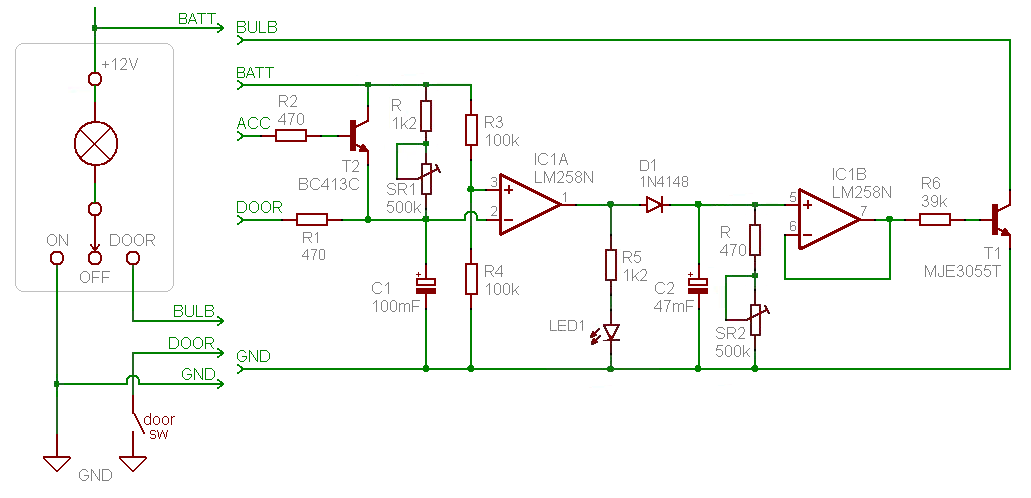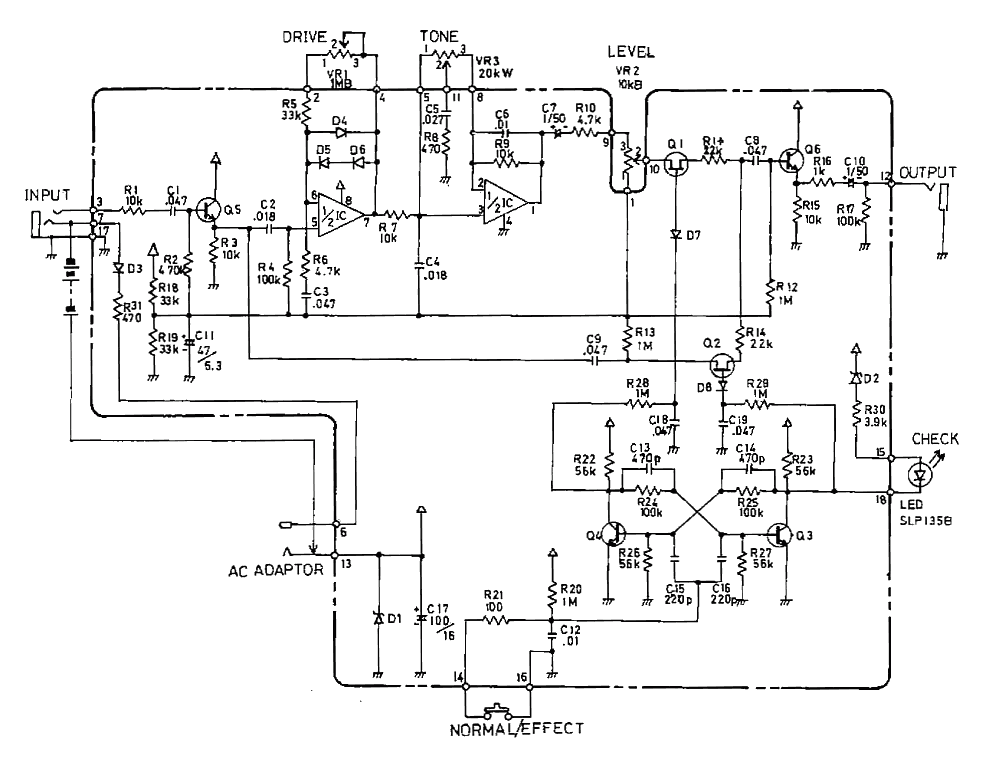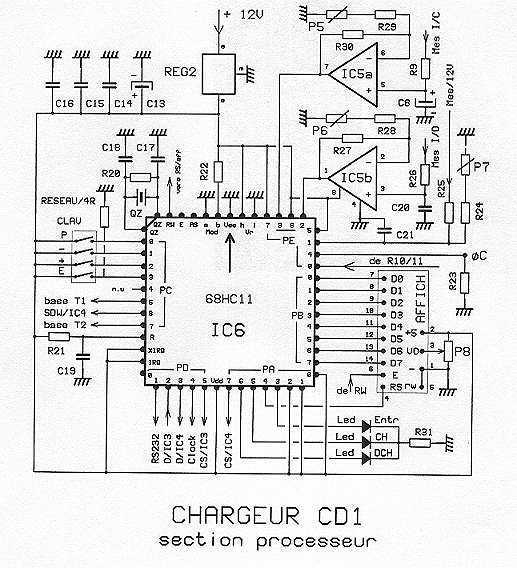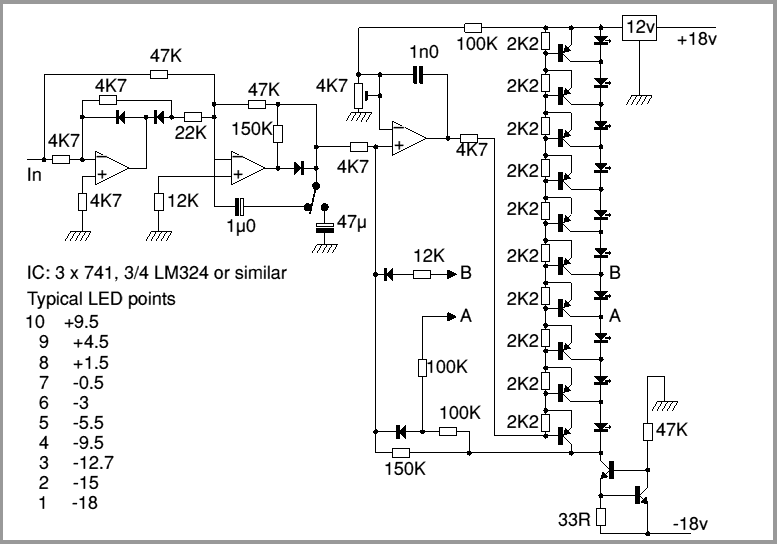
Emergency LED Light LED-716 Emergency Light Schematic

This circuit illustrates the modifications made due to a blown resistor on the backside, which was soldered in place. The issue was traced back to this specific resistor. Currently, the pattern change switch is set to Option 3, which corresponds to Full Light mode. The backup time for this configuration is estimated to be between 8 to 10 hours. Additionally, it is important to note that Option 2 is designated for turning off the bulb.
The circuit features a power supply that feeds into a control unit, which manages the operation of a light bulb based on the selected options. The blown resistor, which has been replaced, plays a critical role in regulating current flow through the circuit. When the pattern change switch is set to Option 3, the circuit allows maximum current to flow, activating the light bulb at full brightness. This setting is ideal for applications requiring extended illumination, as indicated by the backup time of 8 to 10 hours.
The circuit may include a microcontroller or a simple switching mechanism that detects the position of the pattern change switch. The transition to Option 2, which is intended for turning off the bulb, likely interrupts the current flow, ensuring that the light is deactivated when not needed. This feature not only conserves energy but also prolongs the lifespan of the light bulb.
In summary, the circuit design incorporates a robust resistor to prevent overheating and potential failure, while the pattern change switch provides user control over the light output. The estimated backup time indicates an efficient energy storage solution, ensuring reliable performance during extended use.Here you can see that what i did in this circuit. because the resistor on the back side ( which i have soldered) was blown out. so the root of problem was that specific resistor. And in this case, the pattern change switch is on Option 3 i. e on Full light. the back up time will be 8-10 hours. also note that, option 2 is for turning off the Bulb l ight. 🔗 External reference
The circuit features a power supply that feeds into a control unit, which manages the operation of a light bulb based on the selected options. The blown resistor, which has been replaced, plays a critical role in regulating current flow through the circuit. When the pattern change switch is set to Option 3, the circuit allows maximum current to flow, activating the light bulb at full brightness. This setting is ideal for applications requiring extended illumination, as indicated by the backup time of 8 to 10 hours.
The circuit may include a microcontroller or a simple switching mechanism that detects the position of the pattern change switch. The transition to Option 2, which is intended for turning off the bulb, likely interrupts the current flow, ensuring that the light is deactivated when not needed. This feature not only conserves energy but also prolongs the lifespan of the light bulb.
In summary, the circuit design incorporates a robust resistor to prevent overheating and potential failure, while the pattern change switch provides user control over the light output. The estimated backup time indicates an efficient energy storage solution, ensuring reliable performance during extended use.Here you can see that what i did in this circuit. because the resistor on the back side ( which i have soldered) was blown out. so the root of problem was that specific resistor. And in this case, the pattern change switch is on Option 3 i. e on Full light. the back up time will be 8-10 hours. also note that, option 2 is for turning off the Bulb l ight. 🔗 External reference





